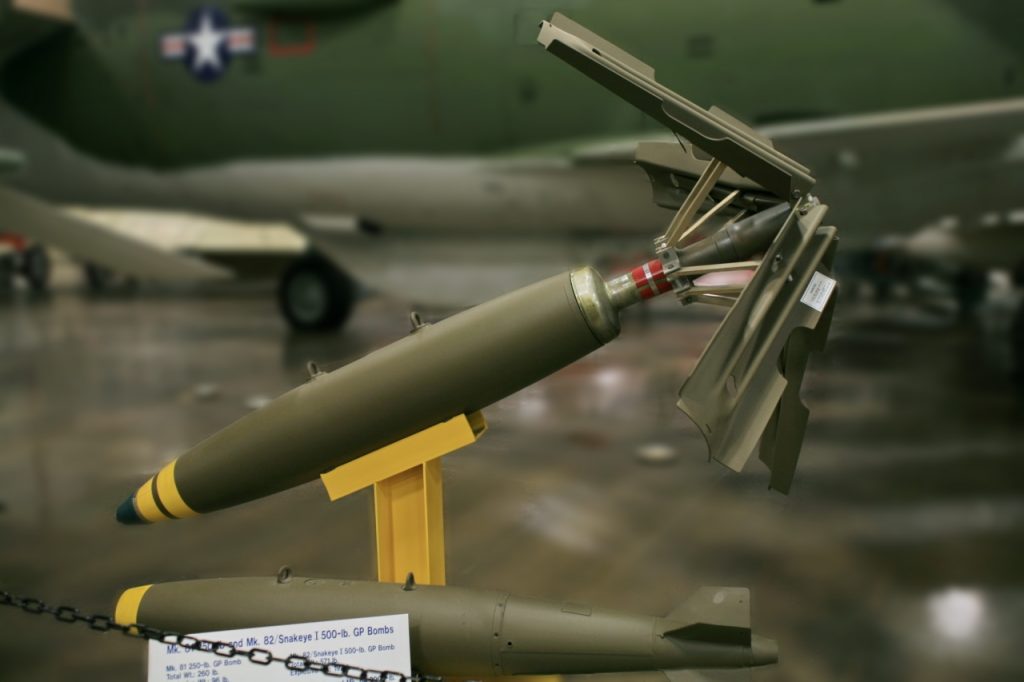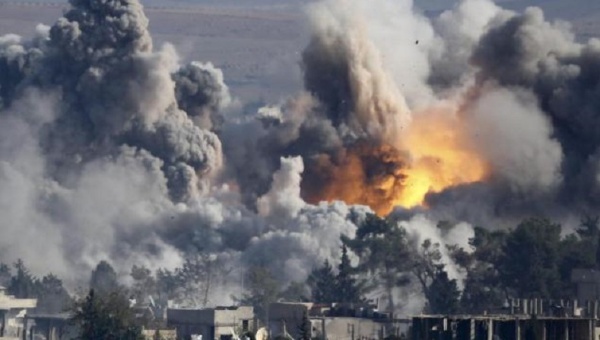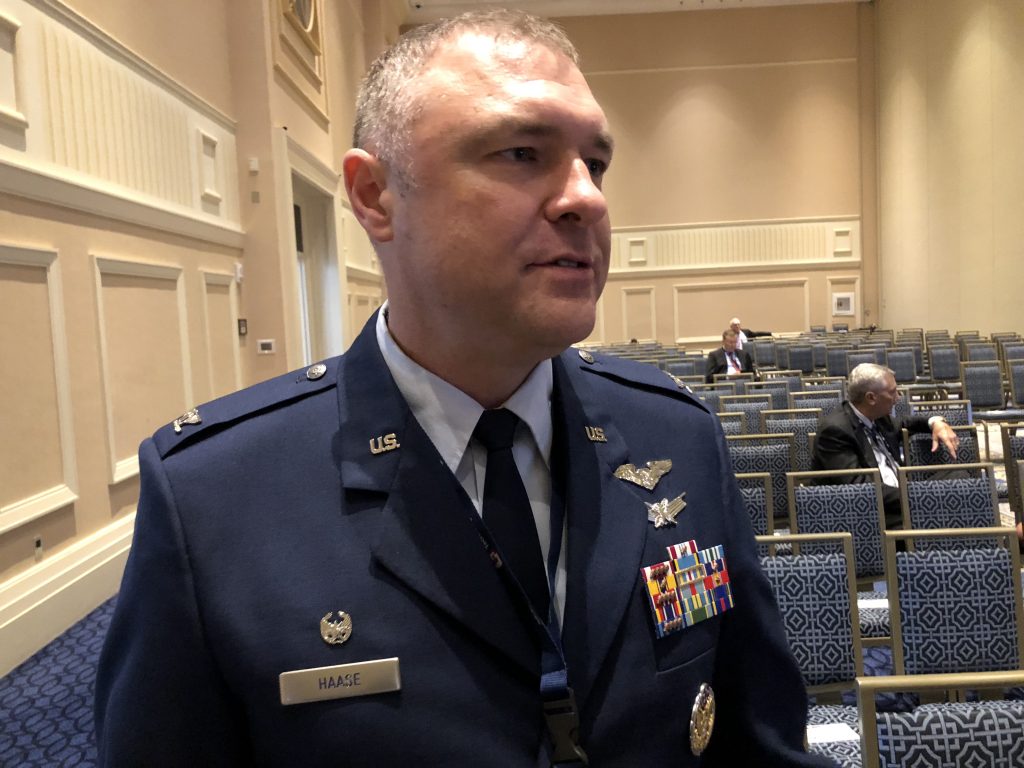Dial-A-Blast For Smart Bombs: AFRL Weapons Adjust Yield To Target
Posted on

The standard Mark 82 bomb dates back to the Vietnam War, but the military was able to kludge together ways to reduce its blast for precision strikes. Now the Air Force Research Laboratory is developing a new generation of “dialable effects munitions.”
AFA: The Air Force is developing smart bombs that detonate differently depending on the target. These “Dialable Effects Munitions” could turn up the blast to devastate an enemy camp or turn it down to kill a single terrorist without hurting nearby civilians.
In the extreme case, said Col. Garry Haase, the director of munitions at the Air Force Research Laboratory, you want to be able to turn the explosive off completely and just slam the now-inert warhead like a bullet into one person at a crowded table, sparing the people sitting on either side. But the next time, you could use the same weapon at full blast to bring down the building.
It’s one more way the military is trying to refocus on great power opponents like Russia and China without forgetting hard-learned lessons from a generation of guerrilla warfare in Afghanistan and Iraq. A single weapon that could adjust for a wide range of targets would be particularly useful for so-called hybrid conflicts. In such wars, like the campaign against the Islamic State or the Russian proxy invasion of Ukraine, the adversary uses everything from plainclothes commandos, intermingled with civilians, to heavy tanks, all of which currently require different weapons.
How We Got Here
Now, nuclear warheads have had variable yields since the 1960s. (The standard method is to infuse greater or lesser amounts of tritium gas, which boosts the nuclear reaction). But conventional explosives haven’t had that flexibility. The closest they’ve come is a technology called “variable burst height” that lets the same bomb go off higher, spreading its effects over a wider area, or lower, concentrating them in a smaller one, but the effects only vary within a rigidly defined range.
So when reducing civilian casualties became a top priority in the years after the Cold War, the US military found many of its bombs – built to blow up Soviet troops wholesale – were overkill for precision-guided warfare. As early as 1999, Air Force units patrolling the “no fly zones” over Saddam Hussein’s Iraq were replacing the explosive in their 2,000-pound bombs with concrete, turning them from big blasts to giant sniper rounds. Soon the military was building specialized low-yield weapons like the 250-lb Small Diameter Bomb (SDB) and the 500-lb Very Low Collateral Damage Weapon that replaces the standard metal body with a carbon-fiber casing that doesn’t fragment into lethal shrapnel. Even the standard metal-cased, 500-lb Mk 82 got on board with a clever innovation: By slowing the fuse down about 10 milliseconds, you gave the bomb just enough time to bury itself in the ground before exploding, which muffled the blast.
The problem with all these damped-down weapons was you couldn’t turn them back up when you needed to. In one case, Air Force Research Laboratory scientist John Wilcox told this week’s Air Force Association conference, pilots dropped slow-fused Mk 82s on a halted enemy convoy. The bombs dutifully buried themselves and shook the ground, the convoy’s vehicles all bounced, and the unhurt enemy scrambled back inside to drive away.
The immediate solution to the problem, Wilcox said, was for planes to carry a mix of slowed-fuse and regular bombs – but that meant they could only use half their ordnance on any given target. What if you could develop one weapon that could work for multiple kinds of targets and adjust all of them to hit whatever you needed to hit on this particular mission? That’s what the Air Force Research Laboratory is working on now, said Wilcox’s boss, ARFL munitions director Haase.
Where We’re Going
Stage one is the Dialable Effects Munition (DEM) Joint Capability Technology Demonstration (JCTD) launched at the lab this year, Col. Haase told me and another reporter after the AFA panel.
DEM is a 2,000-pound bomb that, turned all the way up, can blast a wide area. In fact, it spun off from an effort to replace cluster bombs, whose “steel rain” of submunitions can devastate whole convoys of armored vehicles, but leave so many duds behind for civilians to trip over that the US has agreed to an international ban. (The Russians have not and used cluster munitions to wipe out Ukrainian units).
While a 2,000-lb bomb would be useful in a major war, however, counterterrorist strikes would rarely want to dial the power up that high. So, Haase said, “as we have started with JCTD, we’re getting feedback from the operational community who’s more interested in a 250-lb class of warhead because they see that as (more) flexible.” If you do come across a target that takes 2,000 lbs of bomb, you just drop four 250-pounders. That said, Haase caveated, there are some particularly tough targets, such as buried bunkers, where you still need one big bomb to make sure all your explosive hits the exact same point at the exact same time.
The 250-lb version will be the second generation of the technology, the Selectable Effects Munition (SEM). It’s called that because, besides being smaller, the SEM will also add advanced electronic controls that allow the pilot to adjust the desired yield from the cockpit in the middle of a mission.
But how do you physically vary the blast? The two extremes are easy: Either you set off all the explosive material in the weapon to get the maximum effect, or you set off none of it, turning the bomb into a big bullet like the concrete-filled bombs from 1999. Getting a range of possible yields in the middle is the tricky part. Instead of turning the fuse on or off, you need the explosive equivalent of a rheostat.
Using additive manufacturing and other innovations, AFRL is “distributing the fuse chain within the warhead itself,” Haase said, “so you might only initiate half of it versus all of it.” Or, he said, you might start the explosion from the front of the warhead, propagating backwards, for one kind of target, but start the explosion from the back of the warhead, propagating forwards, to shape the blast differently for a different target.
In crude terms, instead of a single fuse that sets off a single block of explosive (or doesn’t), you 3D print a warhead with multiple fuses, so you can set off only part of the explosive, or set off different parts in different sequences to change the shape of the blast.
Getting this right requires millisecond timing and sophisticated mathematical modeling. But testing facilities and planning tools are still built for the old kind of all-or-nothing bomb. Many of the models the Air Force now uses to plan strikes, the AFA panelists noted, assume an explosion blasts out equally in all directions (axisymmetrically), which means they can’t depict an advanced weapon that focuses its blast. The service will need to upgrade its real-world test sites and computer models to fully understand the new kinds of weapons, they said.
Even once the Air Force fields variable-blast weapons, they won’t replace every other kind of warhead. “It’s not a panacea of being able to service necessarily every target that’s out there,” Haase said. For example, he said, you’ll still need specialized warheads for hypersonic missiles or destroying buried bunkers. But for a wide range of targets, you could carry a single kind of weapon, dialing it up or down as needed to kill the enemy without hurting civilians.
Subscribe to our newsletter
Promotions, new products and sales. Directly to your inbox.


